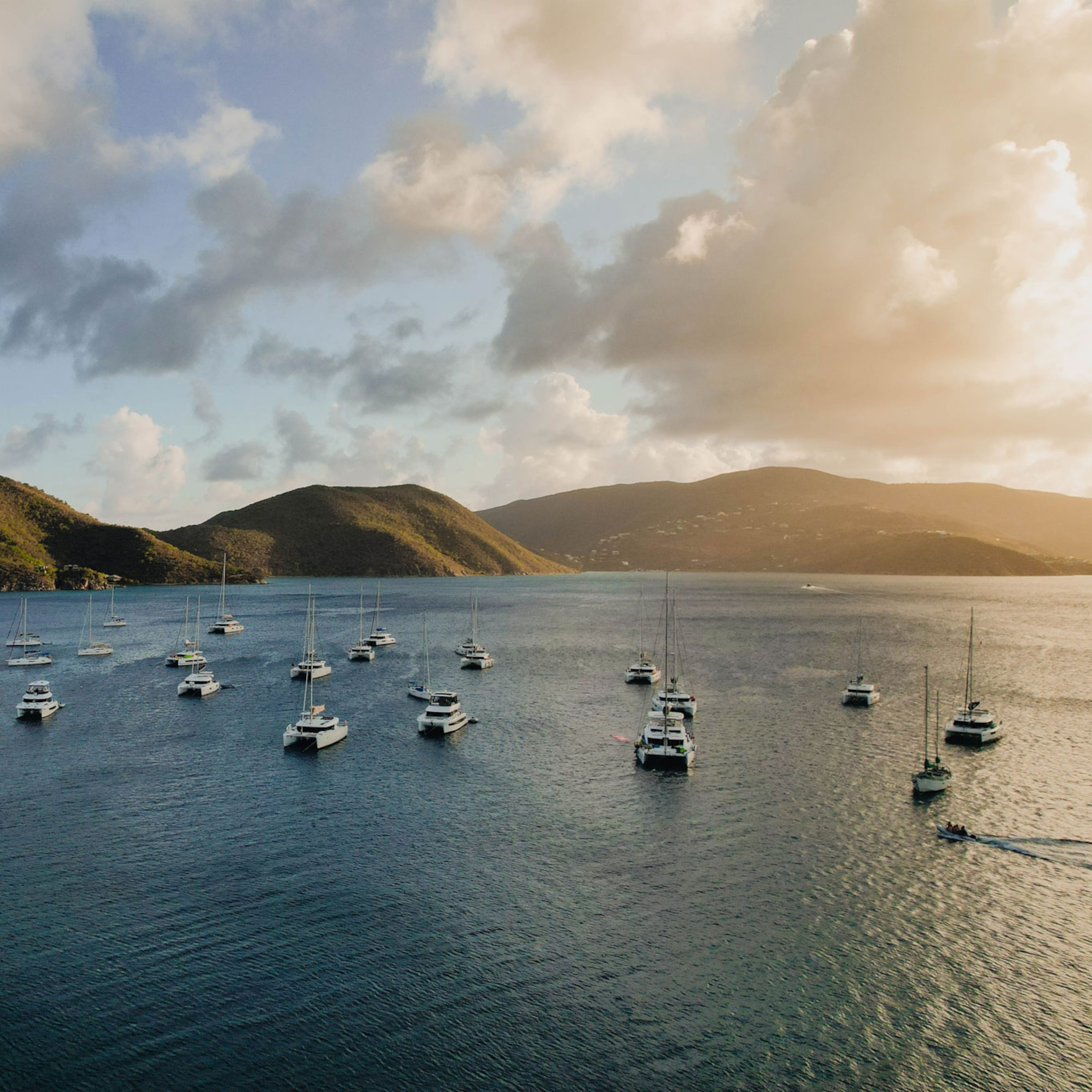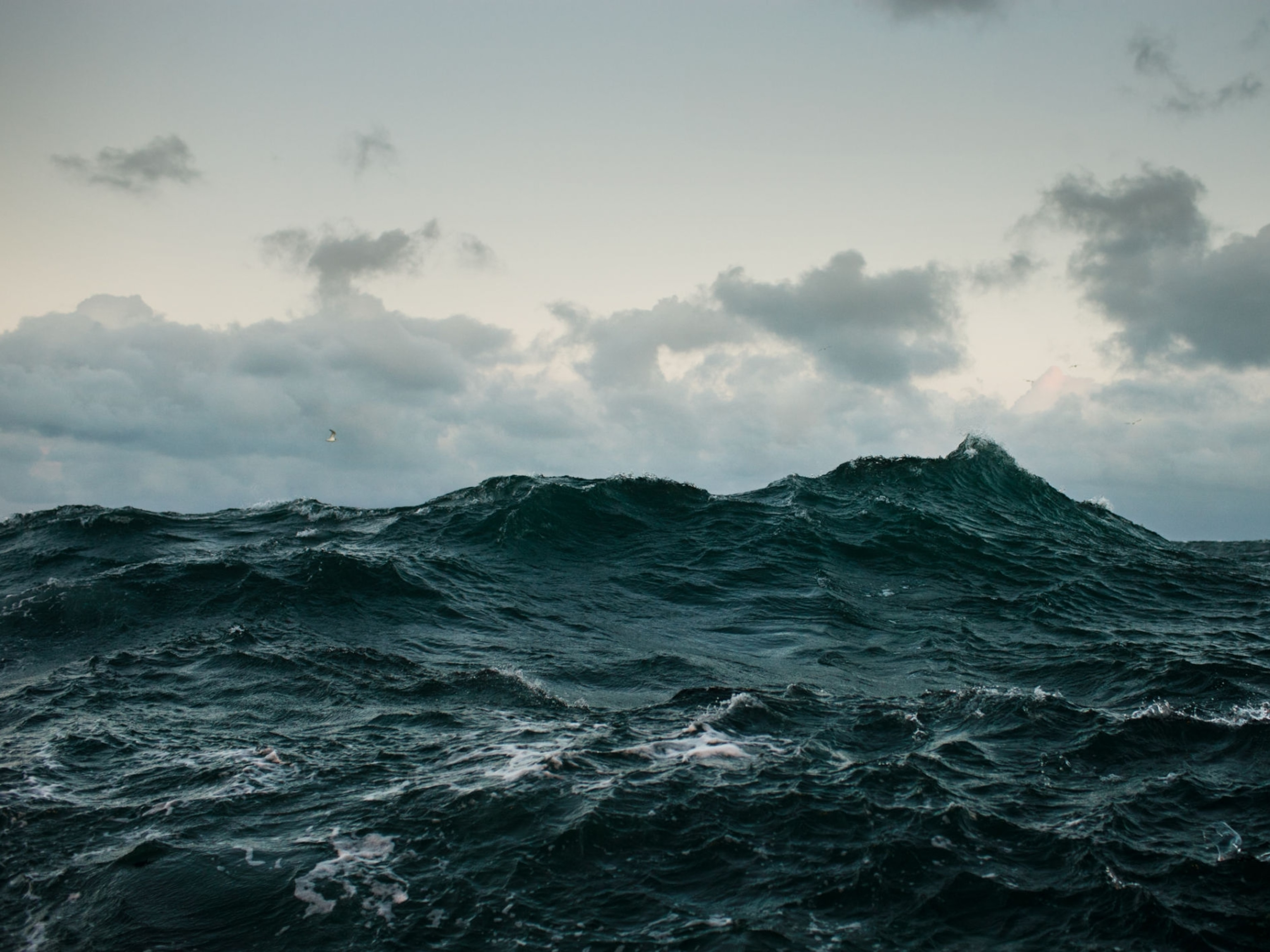Adventurers of the Year 2008
Adventurers of the Year: Rob Gauntlett & James Hooper
Editor's Note: It is with great sadness that we report that Rob Gauntlett died on January 10 in a climbing accident while attempting to scale a section of Mont Blanc in the French Alps. His friend and climbing partner James Atkinson also died. Our thoughts are with their families and friends. We will continue to follow this story on our blog.
Imagine this. You climb Mount Everest by the time you're 19. And that's tame. You want to try something outrageous, something never before attempted. How about traveling from geomagnetic pole to geomagnetic pole in one frantic dash? Start north of Greenland, then ski and dogsled on thin ice, cycle most of the length of the Western Hemisphere, and sail for months into the Antarctic. For Rob Gauntlett and James Hooper, two British teens fresh out of prep school, this sounded about right. A 26,000-mile epic that would take more than a year. Never mind that they had no serious funding, very little time to plan, and no sailing or dogsledding experience. Never mind that they would almost die (twice, it turned out). They had climbed Everest—Mount Everest!—in a similar way, learning skills as they went and paying for it with loans and small corporate grants they dug up themselves. Prudence wasn't necessarily their main concern. They just wanted to throw themselves out there. So on March 28, 2007, they set off—two 19-year-olds running behind dogsleds into a blizzard in northern Greenland—on the most madcap adventure we saw all year.
Their first challenge was to find the starting line. The geomagnetic poles are wobblers in the sea ice, shifting around a few miles from year to year, depending on how the cosmos is feeling. The pair had to sled for ten days, along with Inuit guides, just to find the northern one, an unceremonious patch of ice atop the Arctic Ocean. From there they sent the dogs back (too easy) and began the trip in earnest: skiing south for 250 miles, pulling their sleds behind them. They'd planned to travel on the flat coastal sea ice, but it was so thin they had to climb over rocky headlands instead. That meant glaciers and crevasses. They didn't have good maps or local knowledge or even the right equipment for this. They just skied behind their sleds on the downhills, hoping for the best. If an ice bridge collapsed, they figured the sled would make it to the other side before one of them plunged into a crevasse. They'd be left dangling but would have a way to pull themselves out. "We did actually both fall down some crevasses," Hooper admits a bit sheepishly.
After 21 days of this, they reluctantly called in the Inuit dog teams once more, since the going was so slow. But the ice was getting thinner and thinner. "The Inuit were getting worried about the conditions," Hooper says. "A dog team [coming to meet them] from the other side of the bay had to turn back after a sled and a couple of dogs went through the ice. You could feel [the ice] flexing." So they aimed for an island where they could camp for two or three weeks until the Ice Maiden, a sailboat, could meet them for their second leg, the trip down the infamous Iceberg Alley to New York. But Gauntlett lost a glove and went back to fetch it. "There was a distinctive crack," he says. "And for a second I knew exactly what was happening. I remember thinking, man, this actually isn't that bad, but then I could feel the water, like knives everywhere, and I hit my head on the ice and went unconscious."
Luckily, Hooper saw it happen and ran back several hundred yards through slushy snow. He managed not to panic. "I bridged myself out on the ice and pulled him out," he says. Gauntlett came very close to dying. He was unconscious in the 28-degree water for about four minutes, and nearly four hours total. He awoke just as the medevac helicopter arrived, called in from Upernavik, Greenland. His family, Hooper's family, and their trip supporters all recommended stopping, so Hooper presented this to Gauntlett in the hospital in Upernavik. Here were two teens who had attended an expensive British prep school on nothing but hard-won scholarships and financial aid, who had pulled together a massive expedition on a shoestring, borrowing money from any family members or friends who would lend it.
"Rob told me to piss off, we were definitely carrying on."
So they set sail only a few days later, June 2, on the Ice Maiden for a month of dodging icebergs and very little sleep. They had almost no experience at sea, but that was in the spirit of the trip. They learned quickly from the captain and first mate, and they took their watches at the helm through fog and bergs, doing what most sailors only dream of.
In New York, Gauntlett and Hooper began leg three: an 11,000-mile cycling trip to the tip of South America. They rode south through Philadelphia, D.C., and Memphis, then cut across Texas into Mexico, camping the entire time. Somewhere between Nuevo Laredo and Monterrey, Hooper was drafting close behind Gauntlett, going full speed, when Gauntlett swerved, hitting Hooper's front wheel and sending him over the handlebars. Later, the same thing happened to Gauntlett when he plowed into a loose broom handle.
By the time they reached Panama, they were flat broke, with five dollars between them. Most people would stop. Most friendships would fail. But Gauntlett and Hooper never lost heart. Instead, they billed themselves as inspirational speakers and gave talks in Panamanian schools almost every day for a month. They had a bunch of T-shirts made, sold them, and ended up with just enough money to keep going.
Their persistence was rewarded. They saw amazing things. The Atacama Desert in South America, a thousand miles of moonscape: "Not a single animal, not even an insect. Just sand and rock. At nighttime, the stars are unbelievable," Hooper says. They cycled past Argentina's 22,834-foot Aconcagua, through endless grasslands in Patagonia, and into fierce headwinds at the bottom of the continent.
Then, in Punta Arenas, Chile, they needed a boat with a crew to sail 9,000 miles to the south geomagnetic pole, a hundred miles off the coast of Antarctica and deep in the Southern Ocean. They didn't have any money. So they borrowed $90,000—mostly from people they'd met and inspired on their journey—to charter a 67-foot aluminum schooner. They knew it might take a very long time to repay the loans, especially since they didn't have jobs waiting for them at home. But they just didn't want to stop.
Plus, they would have missed some good times. Hurricane-force winds, waves 70 to 80 feet high. Hooper was at the helm, traveling at eight knots without any sails. Just the bare aluminum masts were enough in that wind. Then things got worse. A squall came through, winds over 80 miles an hour. While Gauntlett was below deck, Hooper and another crew member were being blown off their feet. Hooper could only laugh, a reaction one might expect from a young man staring death in the eye. "It was such a ridiculous situation," he says. "It felt ludicrous."
- National Geographic Expeditions
It was nearly winter in the Antarctic, the birthplace of storms, the windiest, coldest, most desolate place on Earth. A huge wave rose up behind, and the steering cables snapped. The boat flew down the face of the wave and Hooper unclipped his tether, the only thing holding him to the boat. "I did the one thing you're taught absolutely not to do," he says. The boat went all the way over, the masts burying into the water and the sea pouring over Hooper's head. He saw an enormous breaking wave, "a huge white cloud," like a ten-story building collapsing onto him. He was afraid to try to clip his safety tether back in, in case he missed. He had only a moment. So he clung to a pole instead, as the wave thudded on deck and covered him.
This was the price, finally. The planet can look small, and an adventure exciting. You can chart out detailed routes and plan to cover thousands of miles and many months. It can all seem so straightforward and plausible. But then you find yourself in one particular place at one particular time, and the world feels as vast as it is. You wait to find out whether you're going to die.
Hooper clung to that pole, and when he looked up he saw "the Southern Ocean, where sky should have been." The boat wallowed and struggled to right itself, water pouring everywhere below. "It seemed like an eternity," he says.
But he got lucky. Somehow he held on. The keel slowly righted the boat, the bilge pump cleared the seawater from the hull, and that night under clear skies, Hooper watched the aurora australis, "bright green curtains flowing from one horizon to the other. A remarkable day."
Navigating without radar (lost in the storm), Hooper and Gauntlett sailed through the south geomagnetic pole on April 24, 2008, and arrived in Sydney on May 9, 409 days after setting out from Greenland. Their website, 180degrees.com, has had ten million hits, and they've had press coverage on five continents, including weekly TV back in the U.K. They've since given more than a hundred school talks, inspiring youth everywhere, as they'd planned to do. But most of all, they're still alive, still friends, and now at 21 have given us a glimpse of the wild ride this very small and terribly vast planet can provide to anyone who throws himself out there.







